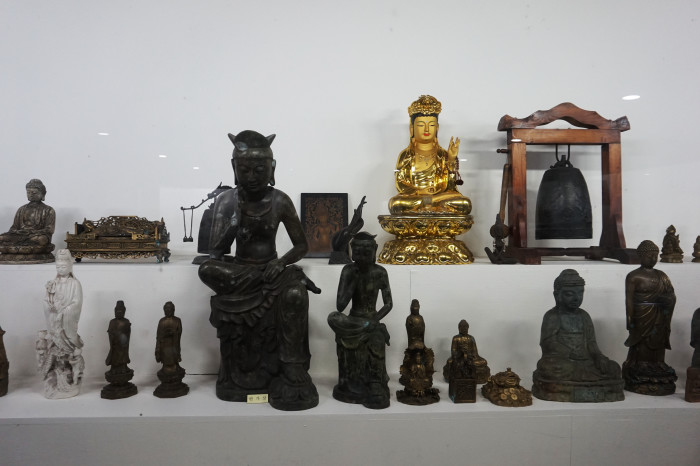GGC
Namyangju_Arachnopia
A stroll with pleasant wind from the river that gently wraps my face
A spider spins a white web to catch harmful insects like flies, mosquitoes, and cockroaches, and helps manufacture medical suture threads and topical anesthetics among others. The spider web is also stronger and more powerful than silk produced by silkworms, which makes it a popular material applied in the textile industry. As you can see, spiders are animals that offer us many benefits. However, we are often hesitant to give our hearts to spiders due to their hairy and grotesque appearances even if we love the

At the Ecological Arboretum in Arachnopia located in a valley of Namyangju's Ungilsan Mountain, "Jupil Spider Museum" awaits us. Founded by Dr. Kim Ju-pil, it is the world's first-ever museum exclusively for spiders. Meaning "Spiders' Paradise," Arachnopia exhibits 5,000 different kinds of spiders that Dr. Kim has collected during his journey to various parts of the world, and the sheer volume of the spiders and relevant materials on display is so large and diverse that it is hard to believe that an individual has accumulated and researched all of them.




The "Spiders' Paradise" features more than just spiders. The Stalactite Room is filled with mysterious-looking stalactites that can be seen in limestone caves while the Minerals Room exhibits more than 250 kinds of rare minerals collected from many countries around the world, and up to 500 pieces of ornamental Suseok(viewing stones) are seen in the Suseok Room and Artifact Exhibition Halls of different nations including Korea, China and Japan. Also, from Spider Breeding Room that exhibits diverse kinds of tarantulas and globally famous spiders and Fossil Exhibition Room that displays 200 pieces of fossils divided into the Paleozoic, Mesozoic, and Cenozoic eras to a library, gallery, and outdoor sculpture garden where a wide variety of butterflies, moths, insects, fish, shellfish, and corals can be enjoyed, you have visited to check out spiders but get a bonus of rare materials and exhibits including insects, minerals, animal specimens, fossils, and wild flowers.
Among these many attractions, however, the most popular of all is the tarantula known as the "largest spider in the world." When he saw an extremely hairy tarantula in the Spider Breeding Room, my nephew who loves spiders shouted with joy and drew a picture of it on his notebook after carefully observing its teeth, eyes, and jaw through a microscope.

If your child has great interests in spiders, Arachnopia is a must-visit museum. The Ecology School programs, which are operated on 1-day, 1-night 2-day, 2-night 3-day and other schedules, offer a chance to collect and classify spiders, observe, and research their behaviors and learn about wild flowers while breathing in pure, clean air of the Ecological Arboretum. Just like my nephew, a countless number of spider-loving students from Jeonju, Busan, and Daegu visit on weekends to attend the nation's best lectures on spiders. Perhaps, the hidden talents and interests of my child may be discovered at Arachnopia.
Written and photos by Kim Sun-joo
Website http://www.arachnopia.com/
<Copyright(c)2002 GGC All rights reserved.>
information
Arachnopia
Address/ 316, Ungilsan-ro (Arachnopia Ecological Arboretum) Joan-myeon, Namyangju-si, Gyeonggi-do
Contact/ 031-576-7908
Hours of operation/ 09:00-18:00 every day
Admission/ Adults: 7,000 KRW, Teens: 6,000 KRW, Children (4 years old or older), soldiers, disabled, and senior citizens: 5,000 KRW
Parking/ Available
- Writer
- About